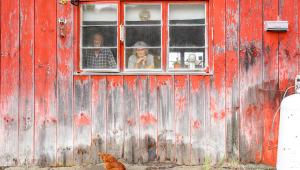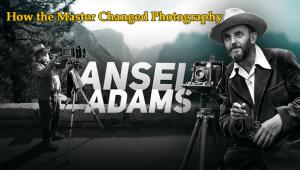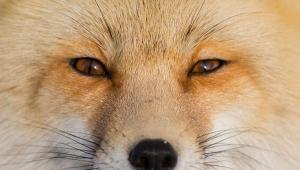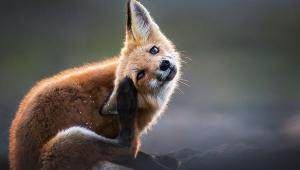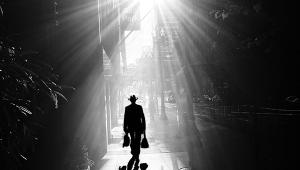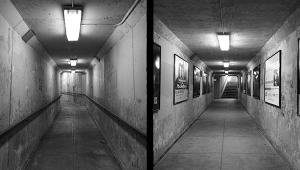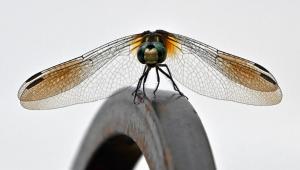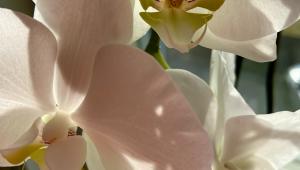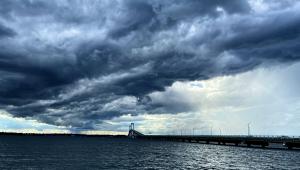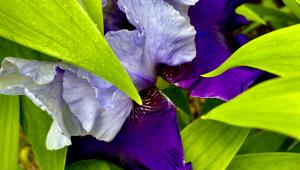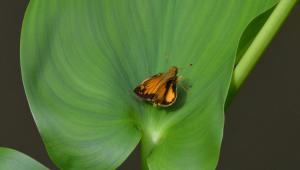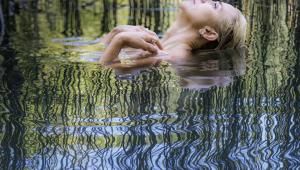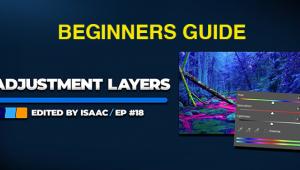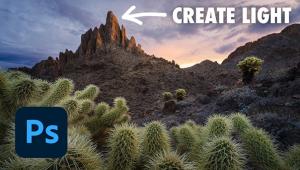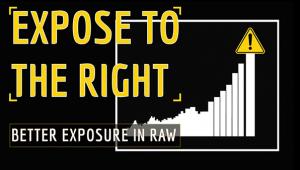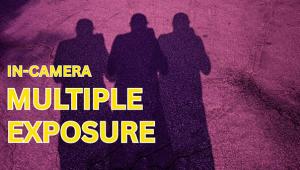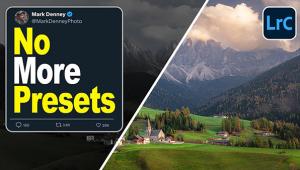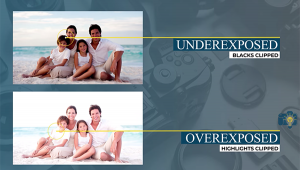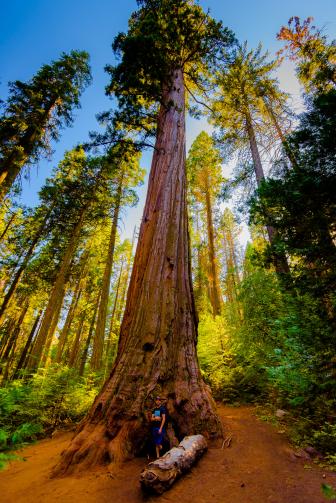The Art of B&W Photography: How Scott Hoyle Captures His Simply Striking Black-and-White Images
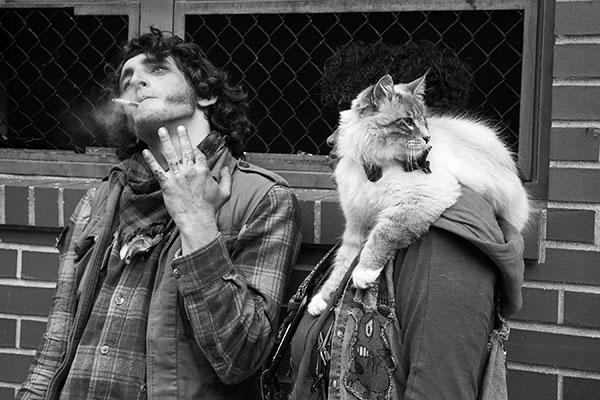
“I like a challenge which is why I decided to shoot this series on young homeless people in Portland who call themselves ‘travelers.’ I’d never done anything like this before so it was awkward when I first approached them. After I told them about how my life story had paralleled theirs in part, they started loosening up and allowed me to peek into their world.” Technical info: Canon EOS 5D Mark II, 24-105mm lens at 58mm; ISO 1250, f/11, 1/400 second. Photos © Scott Hoyle
When he graduated with a BFA from Kendall College of Art and Design, Scott Hoyle would have been very happy purely pursuing a career in graphic design and illustration. But along the way, something happened. In his senior year, he’d borrowed a camera from a classmate, entered a photo contest—and won a Mamiya Sekor SLR.
While this event did not alter the course of Holyle’s job history, the camera did provide him with material on which he based his illustration and graphic design work. And, whereas photography continued to play a role throughout his life, it wasn’t till he retired that he pursued it with a passion. Over the years he’d transition from film to digital. But the move to black and white was more sudden.
Seeing in Monochrome
Hoyle was initially intimidated by black and white. He had launched his photographic career by winning photo competitions and organizing showings of his work—but that focused entirely on the color image. It was at one of these one-man shows that gallery visitors criticized him for a lack of black-and-white imagery.
That was the spark he’d needed to ignite a continuing passion for the monochrome image. With a firm grasp of photographic composition already in hand, what he needed now was to find a toehold in black and white. That came when he discovered Black & White magazine.
“My mouth started watering about being featured in this magazine,” Hoyle recalls. “So I took it as a challenge to start shooting black and white.” Before long, Hoyle found his images featured on the pages of this prestigious publication, as well as on two special-edition covers back to back.
The Thrill of Black and White
What excites Hoyle about black and white? The answer to that question is simple really. He takes great satisfaction from being able to change the tones in the picture, and specifically in being able to burn and dodge precise areas, so the image appears as he actually sees it.

Scott Hoyle shot this scene at Cannon Beach, a popular tourist attraction in Oregon. This was rare, with the beach being wet this far out, and it produced some great reflections, Hoyle noted. He’d observed all the silhouetted figures and recognized that this would make a dynamic monochromatic composition, with Haystack Rock, a noteworthy feature in this landscape, looming in the background. Remaining unseen by the crowd, he continued to shoot, tracking the movements until all the pieces fell into place. Technical info: Canon EOS 5D Mark III, 24-105mm lens at 105mm; ISO 400, f/14, 1/1600 second.
For a time he did have a fascination with black-and-white infrared, and had converted one of his Canon EOS 5D bodies for that purpose. But that fascination has waned, as he sees the false tones often appearing as artifice, rather than art. Instead, he’s chosen to stick with more traditional black and white.
Even when he felt driven to render images to monochrome, the process was not initially automatic—it was tedious and involved. He’d study the images after uploading them to his computer. He would even occasionally take that one step further, opening the images in Google Nik Silver Efex Pro. However, he rarely used the Nik renditions. For the most part, they served as a guide for the conversions carried out in Adobe Photoshop.
Evolving Design Sense
Hoyle’s black-and-white photography is characterized by a strong sense of design. “All my photographs have a heavy design orientation, which comes from working as a designer and illustrator,” he explains. “Much of my work has a graphic edge to it.” Hoyle, we should note, is also a painter.

The Getty Museum provides Hoyle with endless challenges to find something new or to render the familiar in a different way. In this instance an observant eye grabbed onto the seemingly chaotic pattern of chairs, tables, shadowy shapes, and lines in the scene, or as Hoyle simply but poignantly pointed out, “What really makes the shot for me is the lighting and the shadows.” Technical info: Canon EOS 5D Mark III, 24-105mm lens at 75mm; ISO 100, f/11, 1/250 second.
His sensibilities have been fine-tuned over the years and he can recognize what will work as black and white and what won’t. “Now that I’ve been shooting so much black and white, I have an eye for it in advance. I know that black will be black and white, white, and I know the tones are going to be right. Still there are instances where I like the color and I like the black and white, so I use both.”
Case in point, one of the shots featured here, of an arrangement of tables and chairs. The graphic elements are simple enough to hold up under either rendition: the similarity and pattern of tones (or colors, as the case may be), together with the cohesive flow of shapes and lines holding the image together, give it impact and strength. Incidentally, this image also garnered notoriety in international photo competitions.
Hoyle’s Black-and-White Process
When Hoyle decides an image will be black and white, the first thing on his mind is achieving a strong tonal contrast. “I prefer subjects that are contrasty, so they jump out at you,” he says. “I like to see a strong black and a strong white, and if I can get all the grays in between, fantastic! I make sure the file has all the information—all the tones, with nothing dropping out.”

Immediately recognizing that the strong design elements clearly lent themselves to a study in black and white, Hoyle was quick to capture this scene while he had the light. Technical info: Canon EOS 5D Mark III, 24-105mm lens at 75mm; ISO 100, f/18, 1/20 second.
He continues: “I’m pretty basic with what I do in Photoshop. People have commented, saying, you have to be doing more than what you describe, and my answer is simple: No, I don’t. When I open a file in Photoshop, if I don’t have all the blacks and all the whites, I don’t use it. I don’t mess around with it. If it’s not a good shot, it’s not a good shot. What I emphasize to anyone who asks is, take a good photograph and you’re not going to have to do much in Photoshop.”
There is one addendum to that dictum. “I tend to go darker than I originally did with my black-and-white images. I leave the whites white but I make the blacks blacker. So the midtones tend to go more toward black. I picked that up from Brooks Jensen (editor at LensWork). When I first got into black and white, Jensen critiqued my portfolio of images from Hawaii. I asked him what I was doing wrong, and he said, I don’t see a thing wrong. The only thing he added was, Take everything as dark as it can go, and then come back. I’ve followed that advice, and it works.”

“During a horrific storm, I was climbing cliffs in Yachats, Oregon, and was being pelted by rain and pounded by high winds. I’m wet, my camera’s wet; I’d wipe the camera off and continue shooting. I had positioned myself so I could get a dark sky behind the waves. In post, I burned in the sky so it formed a completely black backdrop. It was so overcast that I didn’t have a problem with the exposures and getting that milky texture in the water without doing any tonal manipulation to the sea foam.” Technical info: Canon EOS 5D Mark II, 70-300mm lens at 120mm; ISO 800, f/16, 1/1000 second.
For Scott Hoyle, the world is not simply black and white, while, at the same time, it is. When he chooses to convert a color image to monochromatic shades of black, gray, and white, he does so with a designer’s vision. He focuses on the elements within the frame and how they relate to each other. He doesn’t simply capture a mood. He captures an intricate tapestry, and makes it his own.
Scott Hoyle operates out of the Portland (Oregon) area. To see more of his work, visit scotthoyle.com.
Jack Neubart (jackneubart.com; Instagram: @jackneubart) has authored numerous books and articles on photography over the years.

Taking his dog to see a specialist on Sauvie Island, outside Portland, Oregon, Hoyle was struck by this high-key scene. “The weather had changed; it was getting warmer and raining, and half the snow had already melted. Within a two-minute span, the scene had changed.” Hoyle adeptly captured this scene as is, without making any tweaks in post. Technical info: Canon EOS 5D Mark III, 24-105mm lens at 28mm; ISO 320, f/9, 1/320 second.
What’s in Hoyle’s Gear Bag
• Canon EOS 5D Mark III
• Canon EF 24-105mm f/4L IS USM
• Canon EF 16-35mm f/2.8L USM
• Canon EF 70-200mm f/2.8L IS II USM
• Canon EF 2x extender
• Lowepro backpack
• Manfrotto 055MF3 tripod with 410 geared head
Hoyle’s Favorite Gear
“That has to be my Canon 24-105mm lens because of its versatility.”




